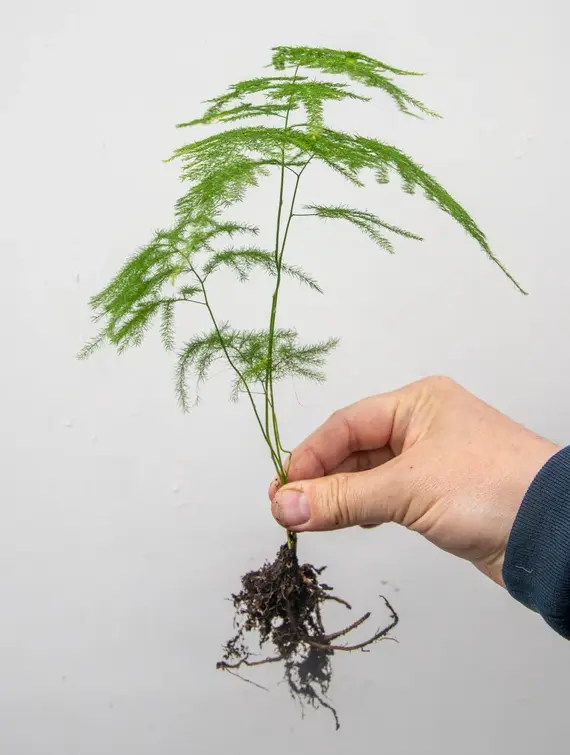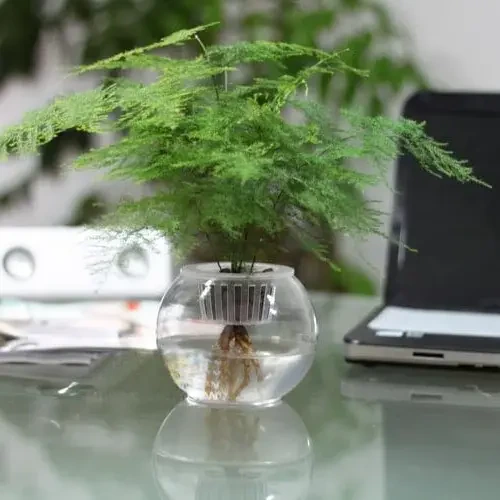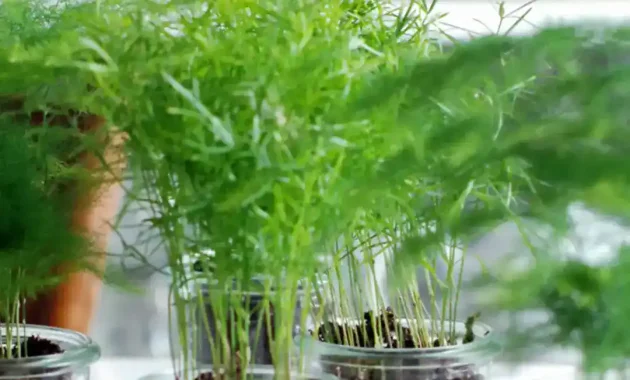Propagating asparagus fern is a rewarding and cost-effective way to expand your plant collection. Whether you’re a seasoned gardener or just starting out, successfully propagating asparagus fern can be a great way to add more greenery to your home without breaking the bank.
This guide will provide step-by-step instructions for propagating asparagus fern at home, using expert tips to ensure your plants thrive. By following these tips and tricks, you’ll be able to cultivate healthy, strong asparagus fern plants that will add beauty and vibrancy to any indoor or outdoor space.
Understanding Asparagus Fern Propagation
Asparagus ferns are popular houseplants that can add a touch of greenery to any indoor space. If you’re looking to expand your plant collection, propagating asparagus ferns can be a cost-effective way to do so. There are several methods for propagating asparagus ferns, including seed propagation, division, and cutting propagation. Each method has its own advantages and drawbacks.
Methods for Propagating Asparagus Fern
The best method for propagating asparagus fern will depend on various factors, including the available equipment, personal preferences, and experience level. Here’s a brief overview of each method:
- Seed propagation: Propagating asparagus ferns from seeds is a time-consuming process that requires patience and attention to detail. It’s best suited for experienced gardeners who want to grow a large number of plants at once.
- Division: Dividing mature asparagus ferns into smaller plants is a quick and easy way to propagate them. This method is best suited for established plants that have grown too large for their container.
- Cutting propagation: Propagating asparagus ferns from cuttings is a popular and effective method. It involves taking cuttings from a mature plant and encouraging them to grow roots of their own. This method is best suited for small-scale propagation or for replacing old or damaged plants.
In the following sections, we’ll take a closer look at how to propagate asparagus ferns from cuttings and in water.

Propagating Asparagus Fern from Cuttings
One of the most popular and effective methods for propagating asparagus fern is through cuttings. This method involves taking a healthy stem cutting from an existing plant and encouraging it to develop roots in a new environment.
To start, select a healthy stem with several leaves from the parent plant. Using a clean, sharp cutting tool, make a diagonal cut just below a node. Nodes are the points where leaves grow from the stem. The cutting should be about 4-6 inches long.
Next, remove the leaves from the bottom half of the cutting. This will help the plant put its energy towards root development rather than maintaining foliage. Dip the cut end of the stem in rooting hormone, which will encourage root growth.
Prepare a pot or container with well-draining potting soil, and make a small hole with your finger or a pencil. Insert the stem cutting into the hole and gently press the soil around it to ensure good contact. Water the cutting thoroughly and place it in bright, indirect light.
It’s important to keep the soil moist but not waterlogged, as too much moisture can lead to rot. To maintain humidity around the cutting, cover it with a plastic bag or clear container. This will also help to trap in warmth, which can encourage rooting.
After a few weeks, gently tug on the stem to test for root development. If it resists pulling out of the soil, roots have formed and the plant is ready to be transitioned to a larger container or planted in the ground. Be patient and consistent with care, and your propagated asparagus fern should thrive.

Propagating Asparagus Fern in Water
Propagating asparagus fern in water is a popular method due to its simplicity and visibility. This method involves rooting cuttings in water until they develop a healthy root system.
The advantages of propagating asparagus fern in water are:
- Easier to monitor root development
- Less mess and easier to control moisture levels
The disadvantages of propagating asparagus fern in water are:
- Some plants struggle to transition to soil after rooting in water
- It can take longer for plants to establish in soil after water propagation
Here are the steps to propagate asparagus fern in water:
- Choose a healthy and mature asparagus fern plant
- Select a stem that is at least 4-6 inches long and has healthy leaves
- Cut the stem at a 45-degree angle, just below a node
- Place the cutting in a container with enough water to cover the stem without touching the leaves
- Change the water every few days to prevent bacteria growth
- Wait for the cutting to develop a healthy root system, which may take up to a month
- Once the roots are at least an inch long, carefully transplant the cutting to a pot with well-draining soil and continue to care for it as usual
It’s important to note that after water propagation, asparagus fern plants may need extra time to adjust to soil and establish a healthy root system. Gradually introduce the plant to soil by placing it in a pot with a mixture of water and soil before transitioning to soil completely.
[youtube width=630 height=350]h6mX4hz3A3E[/youtube]
Tips for Successful Asparagus Fern Propagation
While propagating asparagus fern can be a rewarding and cost-effective way to expand your plant collection, it can also be a challenging process. To help ensure successful propagation, consider the following tips:
Soil type
Asparagus ferns prefer well-draining soil with a slightly acidic pH. Use a mix of peat moss, perlite, and sand to create a loose, well-draining soil for optimal root growth.
Temperature and humidity
Asparagus ferns thrive in warm, humid conditions. Ideal temperature ranges from 60-70°F (15.5-21°C), with humidity levels between 50-70%. Consider using a humidifier or placing a tray of water near the plants to maintain humidity levels.
Fertilization
To encourage healthy growth, fertilize asparagus ferns every 4-6 weeks during the growing season with a balanced, water-soluble fertilizer. Avoid over-fertilizing, as this can lead to root burn and other problems.
Pest control
Asparagus ferns are susceptible to spider mites, mealybugs, and scale insects. Regularly inspect your plants for signs of pests, and treat with insecticidal soap or neem oil as needed.
Patience and consistency
Successful asparagus fern propagation requires patience and consistent care. Be sure to keep the soil moist, but not waterlogged, and provide ample light without exposing the plants to direct sunlight. Avoid moving or disturbing the plants during the propagation process to ensure strong, healthy root development.
By following these tips and adapting them to your specific growing conditions, you can achieve healthy and thriving asparagus ferns through successful propagation.


